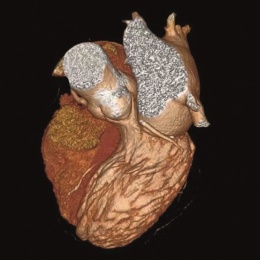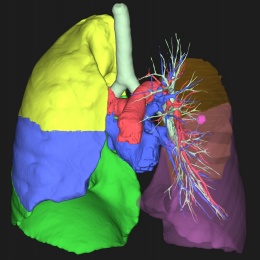Sponsored • Web-based PACS
An ever-advancing portfolio
This is a 20th anniversary year for Fujifilm’s Synapse, the world’s first web- based PACS.
Today, Synapse 3-D offers advanced 3-D rendering in the Synapse PACS Viewer to perform fast, accurate extractions, stenosis measurements, brain perfusion CT, MRI, and more, the company reports. The Fujifilm Healthcare IT platform includes a comprehensive medical informatics and enterprise-imaging portfolio, as follows: Synapse 5 is the company’s next generation PACS. ‘Synapse is one of the fastest medical imaging solutions in the industry, offering sub-second delivery of extremely large datasets,’ the firm reports. ‘Its underlying architecture promotes significantly less bandwidth consumption and tighter security.’ Synapse VNA is the most secure, comprehensive application for ingesting, storing and providing access to the complete imaging record, the company explains. ‘It securely integrates more specialties, more devices, and more data than any other VNA.’
Synapse Mobility Enterprise Viewer uses the latest server-side rendering technology to stream imaging securely and quickly to any authorised user, the company adds. ‘It can be used within applications, directly from your EHR, or on our mobile device apps. Both within and outside of the Enterprise, giving access to imaging immediately and helping clinicians making the most informed and accurate decisions.’
Synapse 3-D accesses multiple advanced visualisation processing tools (more than 50 modules) across multiple specialties including radiology, cardiology, surgery and more. ‘Full integration with Synapse PACS means one-click extremely fast image processing from any Synapse client,’ Fujifilm adds.
The clinical workflow manager Synapse CWM advanced radiology information system continues to evolve, the manufacturer reports. ‘One platform can support acute care facilities, imaging centres, and radiology practices providing distributed diagnosis.’
Syncro-Dose monitors and manages patient radiation exposure across different imaging modalities and facilities.
Artificial intelligence development
Under its REiLI brand, Fujifilm is developing artificial intelligence (AI). Region Recognition, for example, is an AI technology that recognises and extracts organ regions, regardless of deviations in shape, presence or absence of disease, and imaging conditions. Computer Aided Detection is an AI technology to reduce the time of image interpretation. Workflow Support uses AI technology to prioritise study, alert communications of AI findings, and report population automation.
* Fujifilm’s artificial intelligence software is a work in progress and is not commercially available in Europe, the company confirms.
26.02.2019













